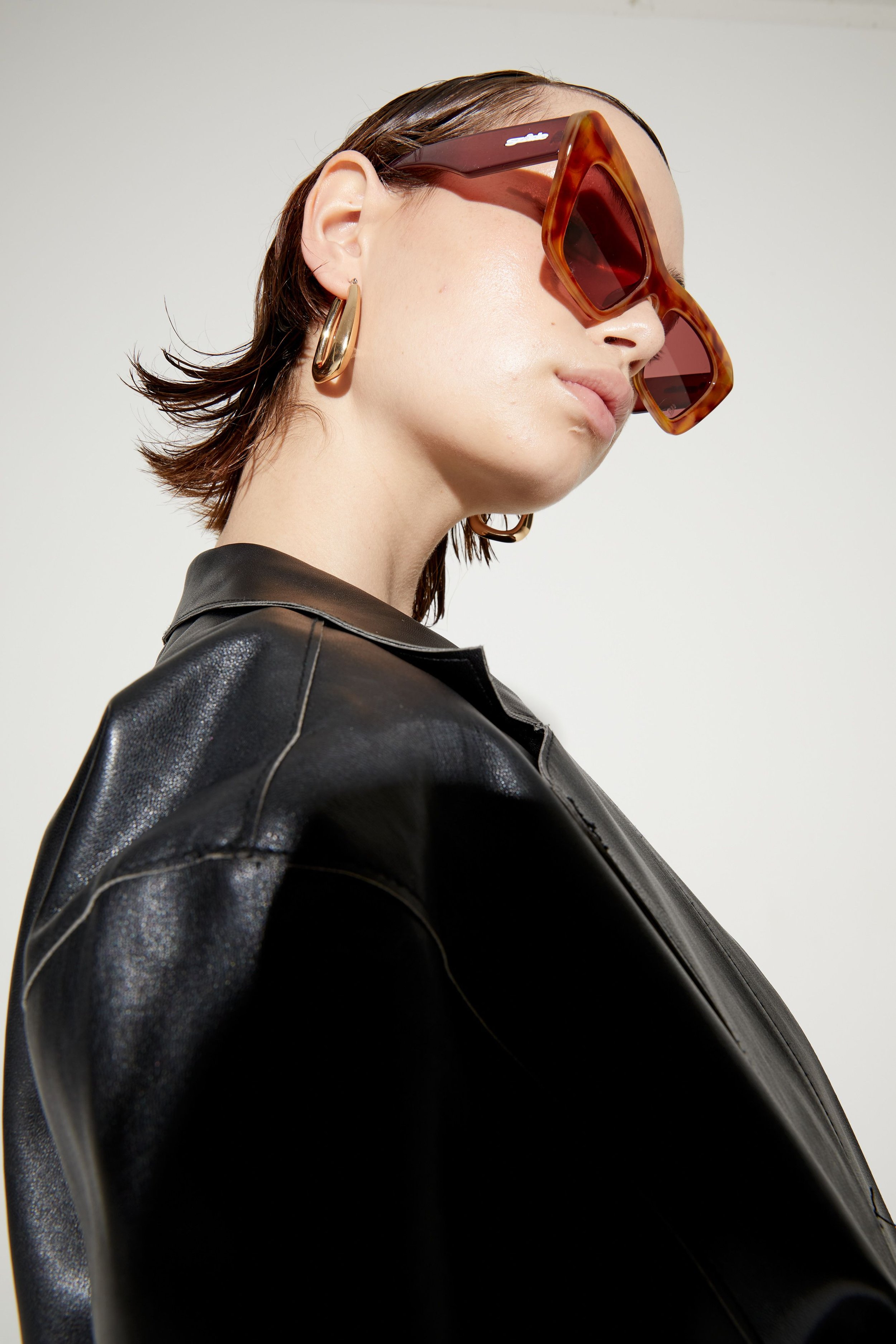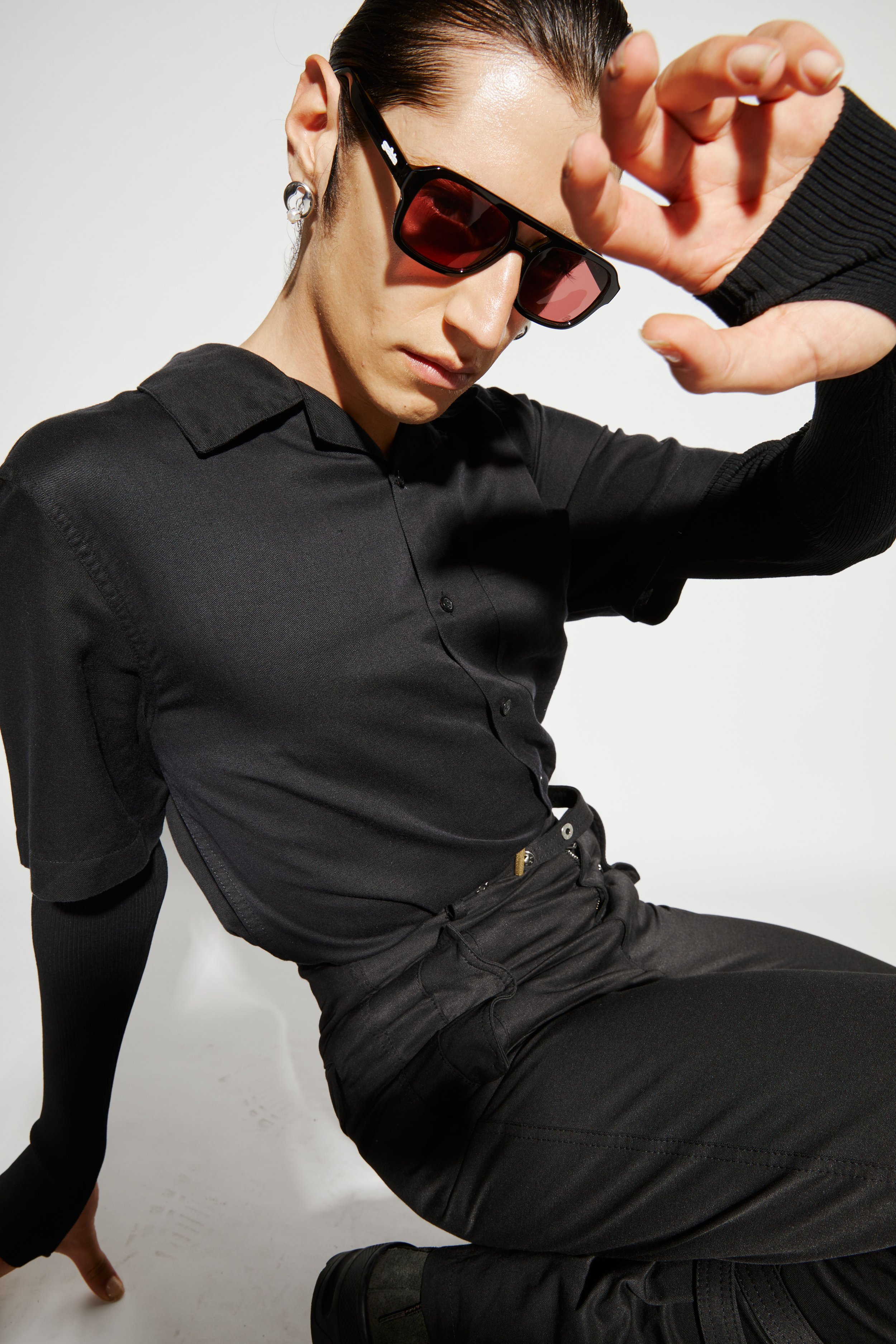INTERVIEW #60 SZADE
Based in: Melbourne, Australia
Founded in: August, 2020
Founded by: A young couple from Melbourne.
Stores: 250 stores in Australia, including https://jolielaideau.com/ and https://shadefiles.com.au/. Just launched in EU and the USA. Also some stores in Hong Kong.
Price range: 60EU – 100 EU
Instagram: @szadecollective
Why we love them: What’s not to love about recycled sunglasses produced by a transparent and true brand? The Szade collective has something extra, which we believe more people than us have discovered. Szade is currently growing and popping up all over the globe, woho! More recycled sunglasses to the people! Follow their journey, stay cool and protect your eyes with Szade! Szades ON!
Tell us about Szade and why you started this amazing sunglass brand?
What makes a young couple from Melbourne quit their jobs in the middle of a pandemic to launch a sustainable sunglass brand? A problem. While one of us was designing furniture, the other was on a work trip to China. Driving through the countryside in between factories, they noticed huge mounds with tonnes worth of shiny plastic. After inquiring with the guide, they learned that they were plastic sunglasses destined for landfill. Not acetate, not metal, but plastic which would take thousands if not millions of years to break down. This got them thinking and they were immediately struck and moved by the problem... And then the question; what to do with all of these wasted plastic sunglass frames? The answer seemed obvious at first, why couldn’t they be recycled into plastic sunglass frames once more? But then reality set in. This process would be much more complex and revolutionary than the concept itself. Fast forward to two years of research, development, experimentation, trial and error, frustration and a looming pandemic and the process and technology to turn these wasted frames back into brand new sunglasses was ready. But the world didn’t need another eco brand. The world needed something fashionable, desirable, cool, chic, slick and sexy that just happened to be sustainable. The founders conducted extensive market research and realised nothing that was sustainably and responsibly made looked or felt not only on trend, but cutting edge. The next piece of the puzzle was how to bring such a product to market; before szade, most sustainable products came with a huge premium, and were always more expensive than their non-sustainable counterparts. To make a real difference and a real change, the new frames would need to be as accessible as possible. Eventually, a cool, cult fashion inspired, recycled and accessible brand concept emerged to fill many gaps in the market. Szade launched in august of 2020, in the middle of the pandemic.
What makes Szade sustainable?
Quite simply, sunglasses; made from recycled sunglasses. Our unique recycling process is by far the most important pillar and is essentially the foundation of the brand conceptually, physically and materially. If szade couldn’t recycle the wasted frames destined for landfill, they wouldn’t be designing and making sunglasses. period. As you read this, look around the room; any and everything you can see and touch can and should be made better for the planet. Whether it’s using recycled materials, sustainable processes, or designing a circular or modular system to reduce waste and extend its longevity, there’s always a better way. Szade considers itself a fashion brand that just does things the right way, and believes this is how every brand should be thinking about sustainability. It’s not a novelty or a trend, or a marketing tool for greenwashing; our planet demands us all to make changes no matter how big or small.
How and where are the products produced and where do you source the material from?
They save tonnes of over run, out of use, faulty and wasted frames in China that were destined for landfill. They optimise for the most carbon conservative strategy by collecting these sunglasses close to the source and taking them to their facility where they enter the unique recycling process. The frames are broken down and processed into their raw materials and are then ready to become a pair of szades. Plastic is the problem in the eyewear industry. period. not acetate, not metal frames, not wood... plastic. Szade doesn’t use bio materials or anything plant based since they don’t want to harvest the earth’s precious natural resources. Instead they choose to utilise what’s already there, and save it from ending up in landfill for millions of years. recycle your szades and break the cycle. This is where the root of the problem is. If you want to break the cycle and make a difference, you have to find the source of the problem and start there. Most of the world’s eyewear production is happening in China and will continue to do so. Consequently most of the wasted frames end up there too with no after life planned for them. the materials are there, the waste is there, it just takes a fresh outlook, some imagination and research and trash can become treasure, giving these wasted frames a new life.
Your best selling product?
The collective favourite is most certainly the dollin frame in our signature jaded greens colourway. This colourway was inspired by the raw recycled material and how it looks in certain parts of the process.
Where do you find inspiration?
Our community, our following and our collective. It’s everyone who follows the Instagram or buys a pair – we look, listen and ask for feedback. The brand is just as much the collective’s as the founders’.
What have been and are the major challenges?
Launching in a pandemic was definitely one of the biggest challenges as everything is delayed or more difficult.
What has been and are the largest gain?
The biggest gain and most rewarding part has definitely been the community we’ve created and the new friends we’ve made along the way. We chat regularly through Instagram to our community and love to know what’s going on in their lives, what their opinions are, what’s important to them and how they wear their szades day to day.
What do you think needs to change in the fashion industry to make it more sustainable?
We mentioned this earlier but quite simply, everything you can see and touch around you can and should be made better. We are NOT an eco-brand. We are NOT a sustainable brand; we are just a fashion brand doing things the right way, and the way they should be done.
What would you advise consumers to do who seek to create a sustainable closet and lifestyle?
There have never been more sustainable options than there are today. We love to shop vintage, up-cycle, alter, repair and re-model clothes, bags and shoes. Fashion trends tend to be circular anyway. Y2K is hot right now and most of us will still have a pair of low rise jeans and rhinestone t-shirt in the back of our closets. Also so many beautiful brands that create better products for a better world, from our home town we love Aaizel and Arnsdorf. Many big brands also have sustainable options with recycled material components and are responsibly sourced like GANNI for example. You just have to look! In a lot of cases you won’t even have to compromise on what you usually wear and love. New Balance now has some shoes that are created with recycled materials. Even Prada uses recycled nylon in their Re-Nylon range. Also remember to look for products that can be recycled, or degrade once you’re finished with them – that’s often the most overlooked part. Our szades for example can be recycled over and over again!
What is the best thing about Szade?
I think the best thing about szade is that we’re for real. Everything we do comes from a place of love for the planet, love for our community and love of fashion. Unlike many other brands with sustainable claims our factory and material supply chain are also GRS certified which means everything can be traced, tracked and verified.
What's your best advice for people who want to start their own business or get into the industry?
The best advice we can give is to be organised. Plan, research, develop, watch, look, listen and learn. Don’t go into anything without planning and completely understanding why your brand exists, and what gap it fills in the market. And ALWAYS have purpose.







